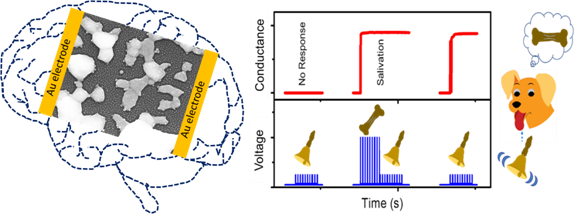
Scientists have fabricated a device that can mimic human brain cognitive actions and is more efficient than conventional techniques in emulating artificial intelligence, thus enhancing the computational speed and power consumption efficiency.
Artificial intelligence is now a part of our daily lives, starting from email filters and smart replies in communication to helping battle the Covid-19 pandemic.
But AI can do much more such as facilitate self-driving autonomous vehicles, augmented reality for healthcare, drug discovery, big data handling, real-time pattern/image recognition, solving real-world problems, and so on.
These can be realised with the help of a neuromorphic device which can mimic the human brain synapse to bring about brain-inspired efficient computing ability.
The human brain comprises of nearly a hundred billion neurons consisting of axons and dendrites.

These neurons massively interconnect with each other via axons and dendrites, forming colossal junctions called synapse.
This complex bio-neural network is believed to give rise to superior cognitive abilities.
Software-based artificial neural networks (ANN) can be seen defeating humans in games (AlphaGo and AlphaZero) or helping handle the Covid-19 situation.
However, the power-hungry (in megawatts) von Neumann computer architecture slows down ANNs performance due to the available serial processing while the brain does the job via parallel processing consuming just 20 W.
It is estimated that the brain consumes 20% of the total body energy.
From the calory conversion, it amounts to 20 watts. While the conventional computing platforms consume megawatts, i.e., 10 lakh watts of energy, to mimic basic human cognition.
To overcome this bottleneck, a hardware-based solution involves an artificial synaptic device that, unlike transistors, could emulate the functions of human brain synapse.
Scientists had long been trying to develop a synaptic device that can mimic complex psychological behaviors without the aid of external supporting (CMOS) circuits.
Aiming to develop a synaptic device for neuromorphic applications with a humble fabrication method, the JNCASR team explored a material system mimicking neuronal bodies and axonal network connectivity much like the biological system.
In order to realize such a structure, they found that a self-forming process was easy, scalable, and cost-effective.
Using programmed electrical signals as a real-world stimulus, this hierarchical structure emulated various learning activities such as short-term memory (STM), long-term memory (LTM), potentiation, depression, associative learning, interest-based learning, supervision, etc. impression of supervision.
Synaptic fatigue due to excessive learning and its self-recovery was also mimicked.
Remarkably, all these behaviors were emulated in a single material system without the aid of external CMOS circuits.
“Nature has had an incredible amount of time and diversity to engineer ever new forms and functions through evolution. Learning and emulating new processes, technologies, materials and devices from the nature and biology are the important pathways to the significant advances of the future which will increasingly integrate the worlds of the living with the man-made technologies.
Source : PIB , The Hindu , LSTV, RSTV, The Indian Express , Google, Science , Wikipedia
Disclaimer : It is a free material for students preparing for Civil Services Exams


